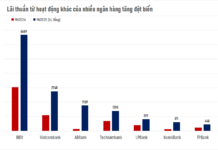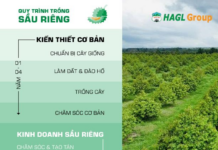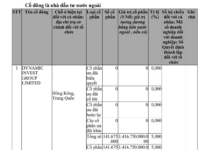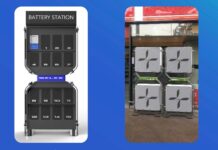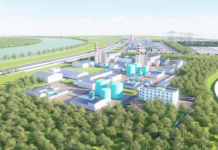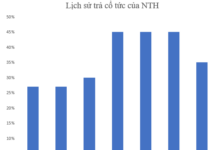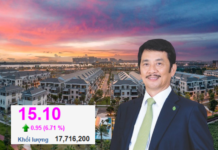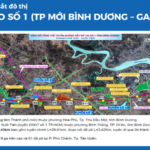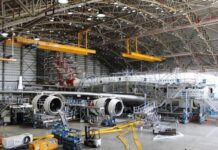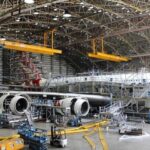The Ho Chi Minh City Department of Construction has submitted a report to the City People’s Committee outlining the technology, standards, and technical specifications for the Metro Line 2 project (Bến Thành – Tham Lương). Spanning over 11.2 km, this east-west corridor connects Bến Thành, Cách Mạng Tháng Tám, Trường Chinh, and Tham Lương, playing a pivotal role in managing public transportation and alleviating traffic congestion in the area.

According to the Department of Construction, Ho Chi Minh City is upgrading Metro Line 2 to the GoA4 automation level, enabling fully automated train operations in line with international standards.
Following the shift from ODA funding to public investment, the city has completed several procedures to adjust the project and integrate additional components for seamless connectivity with Metro Line 1 at Bến Thành Station. Metro Line 2 has also been designated as a pilot project under the special mechanism outlined in National Assembly Resolution 188, ensuring construction begins as scheduled on January 15, 2026.
The Department of Construction notes that the previous technology plan (2010-2016) is no longer suitable given the rapid advancements in urban rail technology. The update is essential to align with global trends, ensure interoperability with Metro Line 1, and accommodate future metro lines. The proposed technology adheres to European standards, incorporating modern features while remaining compliant with Vietnamese regulations.
Feedback from departments, specialized units, businesses, and experts unanimously supports the technological changes proposed by the Ho Chi Minh City Urban Railway Management Board (the project investor). Previously, the project relied on ODA loans but faced significant challenges, prompting the City Party Committee to switch to using the city’s budget. By July 2025, the Prime Minister approved discontinuing the use of ODA funds and concessional loans from Germany’s KfW Development Bank.
A major adjustment includes transitioning from a third-rail power supply (750V DC) to an overhead catenary system (1,500V DC), which is expected to yield greater economic efficiency. The project will also incorporate a regenerative braking system to optimize energy consumption. The Automated Fare Collection (AFC) system will be upgraded to ensure future compatibility across the entire metro network.
Notably, Metro Line 2 will be elevated to the GoA4 automation level, enabling fully driverless train operations without onboard staff. The system will autonomously handle startup, self-diagnostics, precise station stops, train turnaround, operational mode switching, passenger evacuation, and depot entry as pre-programmed. In exceptional or emergency situations, operators at the Operation Control Center (OCC) can intervene remotely, including activating emergency brakes, controlling doors, and adjusting air conditioning.
Previously, under the GoA2 technology, most operations such as startup, station stops, door control, and emergency handling were manually performed by train drivers.
According to the International Association of Public Transport (UITP), fully automated operations are becoming the dominant trend, with 75% of new lines worldwide adopting this technology since 2020. By the end of 2025, approximately 2,300 km of fully automated metro lines are expected to be operational globally.
Ho Chi Minh City Sets Specific Land Prices for Series of Projects
In the first 10 months of the year, the Ho Chi Minh City Department of Agriculture and Rural Development has received, evaluated, and submitted 65 land valuation dossiers to the Ho Chi Minh City Land Price Appraisal Council. Simultaneously, they have successfully resolved long-standing land allocation and land-use conversion dossiers dating back to the 2003–2013 period, totaling 84 cases.
Ho Chi Minh City Prioritizes Early Investment in 9 Metro Lines Totaling $37 Billion and Spanning 374 km: 6 Central Lines, 2 in Former Binh Duong, and 1 Toward Former Vung Tau
Among the 9 urban railway lines prioritized for investment by Ho Chi Minh City before 2035, 6 lines are located in the city center, 2 lines in Binh Duong (formerly), and 1 line in Ba Ria – Vung Tau (formerly).
Why Đàm Vĩnh Sold His Hundred-Billion-Dong, Dual-Frontage Villa in Ho Chi Minh City
The news of Dam Vinh Hung selling his luxurious villa, valued at over a hundred billion VND, with a prime double-frontage location in Ho Chi Minh City, has captured the attention of many. This stunning property is a testament to the singer’s success and has become a topic of interest among fans and real estate enthusiasts alike.






